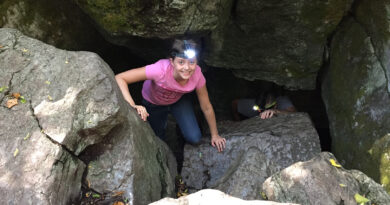Peterborough Canoes, Sure – But Peterborough Toboggans?
The Peterborough Canoe Company (PCC) was formed in 1892 and operated until 1961. It produced thousands of wide-board, cedar strip, and cedar rib canoes, which were sold all over Canada and the United States; in Britain and Europe, its canoes were popularized via international trade expositions. The company’s pre-1940s success made the words “Peterborough” and “canoe” almost synonymous. Post-Second World War, however, saw the popularity of canoeing eclipsed by power boating, and wooden canoes were supplanted by easily mass-produced – thus less expensive – aluminum and fibreglass versions. For the last decade of its existence, the PCC mainly manufactured powered runabouts from wood, aluminum, or fibreglass. As would be expected, the company provided customers with canoe-related accessories, but starting about 1930 it also made wooden toboggans.
Toboggans are runner-less sleighs – usually about 18 inches wide and from 4 to 10 feet long, with curled fronts. Modern versions are made of thin, straight-grained boards (hickory, oak, or birch) fastened together by light cross-pieces. Toboggans have been used for centuries by North American Indigenous peoples as transport over snow and ice for goods, belongings, passengers, and even large game. Toboggans travelled easily over deep snow because their load weights were distributed evenly. They could be pulled by people, dogs, or horses.
In the 1880s, recreational downhill tobogganing originated on Montreal’s Mount Royal, and became very popular in Canada, then spread into the United States. Clubs were formed and ice “runs”, or “chutes”, were built when natural slopes were not available. Peterborough had a multi-lane toboggan run in Jackson Park, between Parkhill Road and Bonnacord Street. Recreational tobogganing created such a market that manufacturers such as the Peterborough Canoe Company put their woodworking, wood-shaping, and varnishing equipment to good use producing toboggans. Eventually, though, downhill skis replaced the toboggan as a pre-eminent winter recreation, making the manufacture of toboggans a less profitable enterprise.
In 1951, the PCC stopped toboggan production, but two examples of its early output are in the Peterborough Museum & Archives’ holdings: a 2-seater and a larger version. These are sure to bring back fond childhood memories for many visitors – and for this Museum staffer.
By: Don Willcock,
The Peterborough Museum & Archives,
300 Hunter St E, Peterborough, 705-743-5180
www.peterboroughmuseumandarchives.ca



